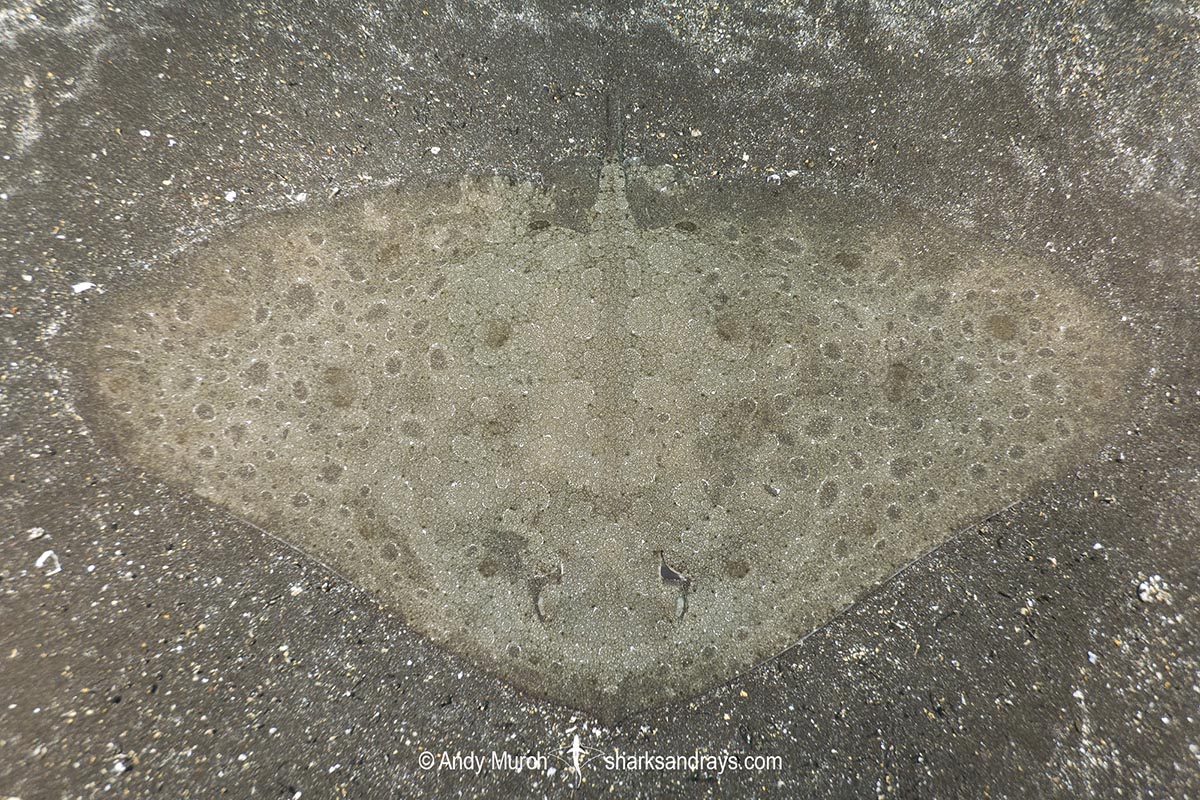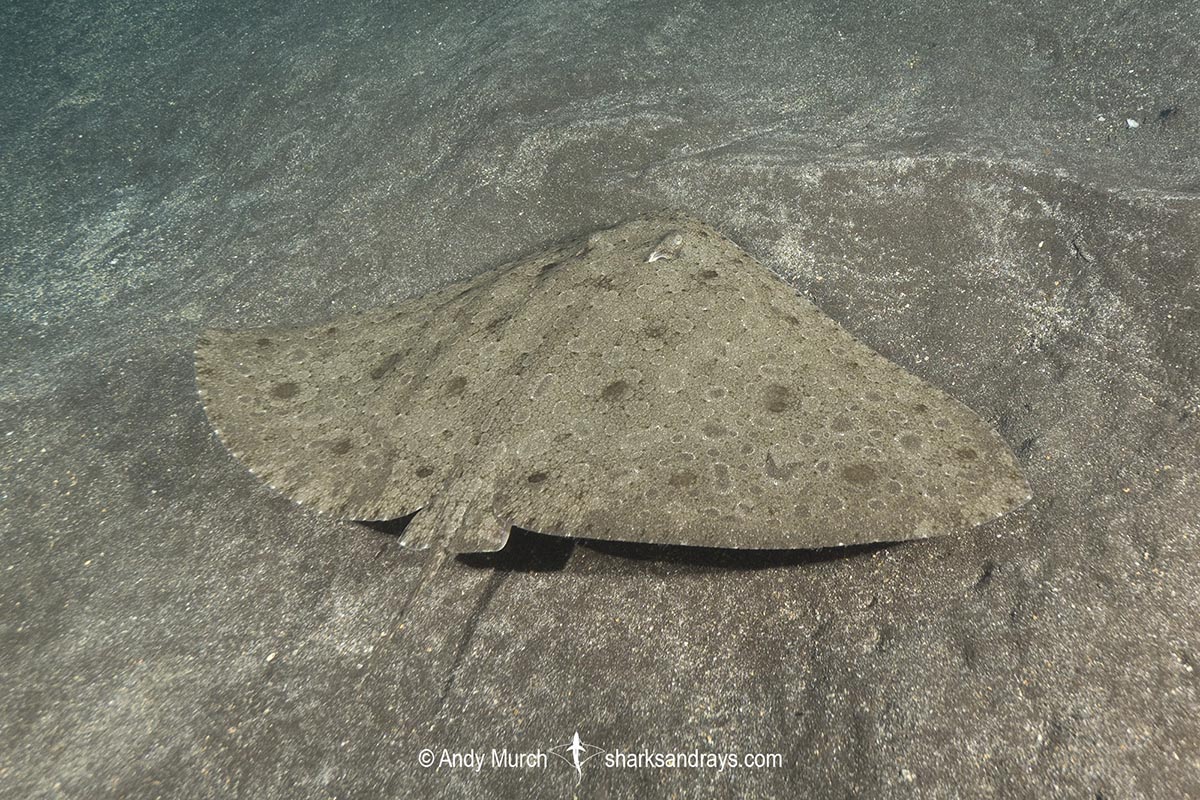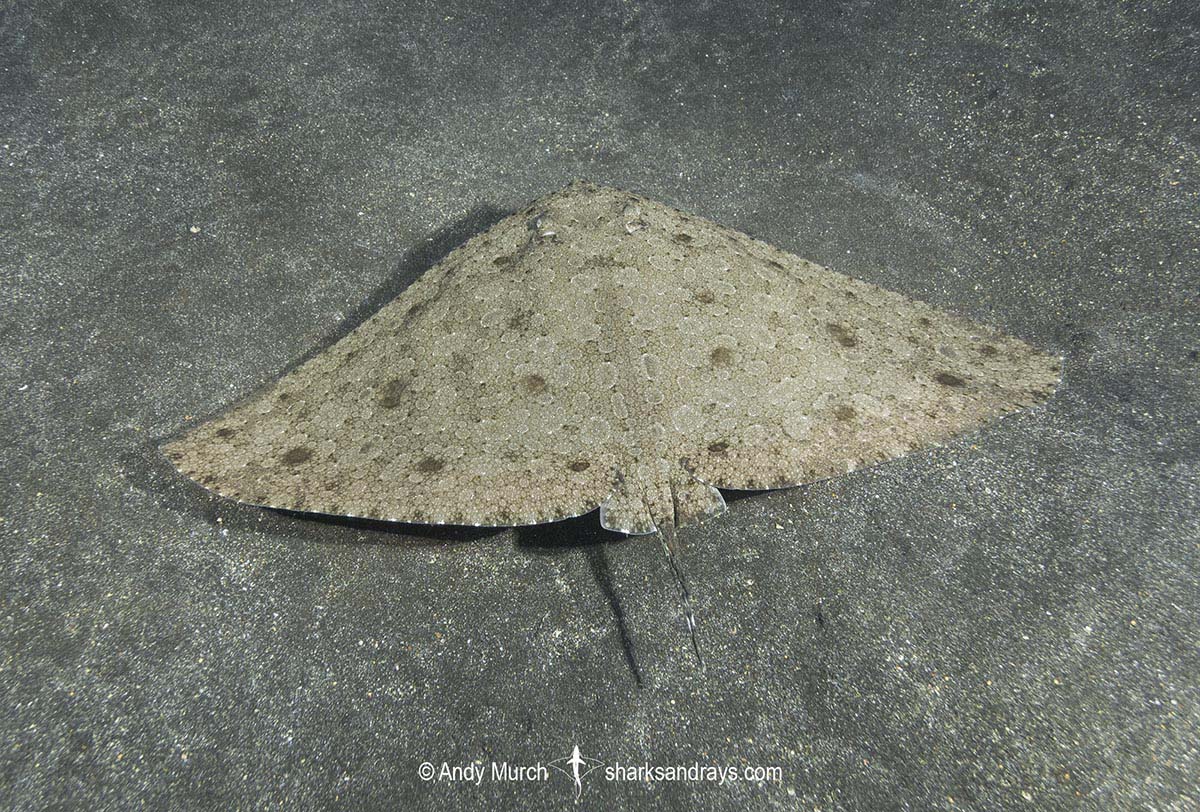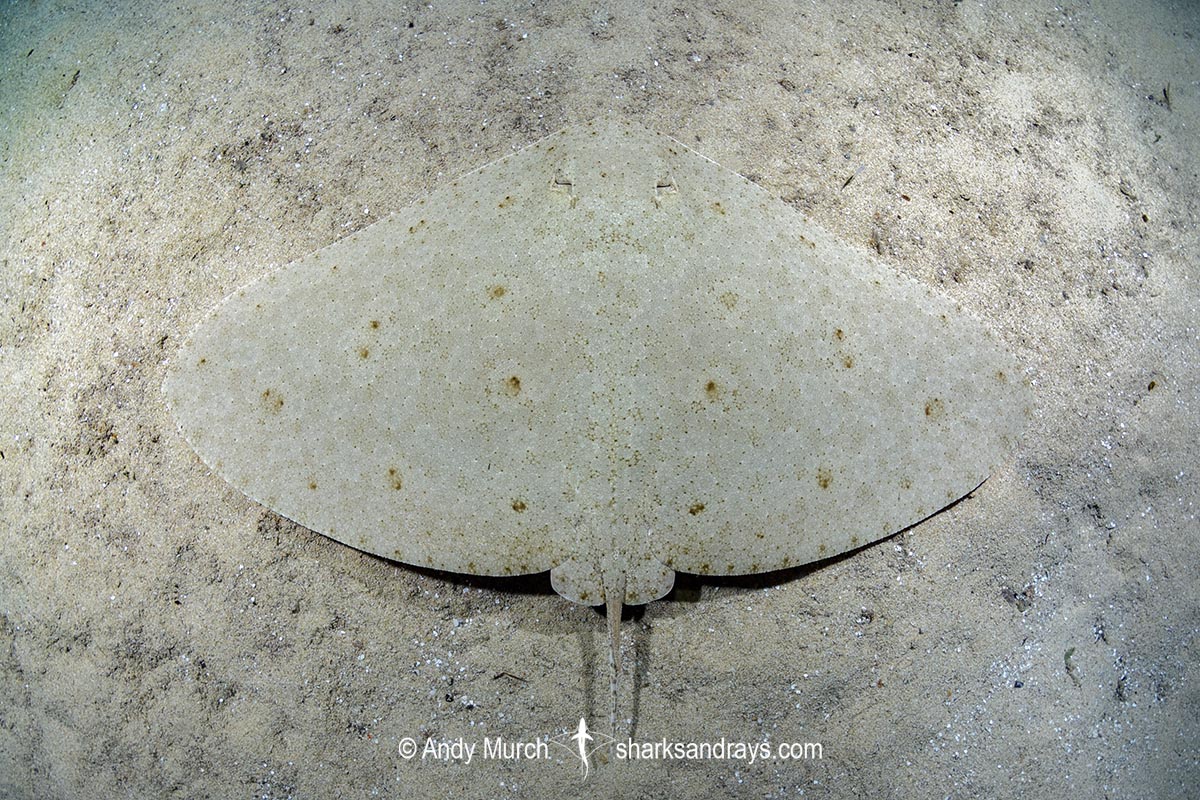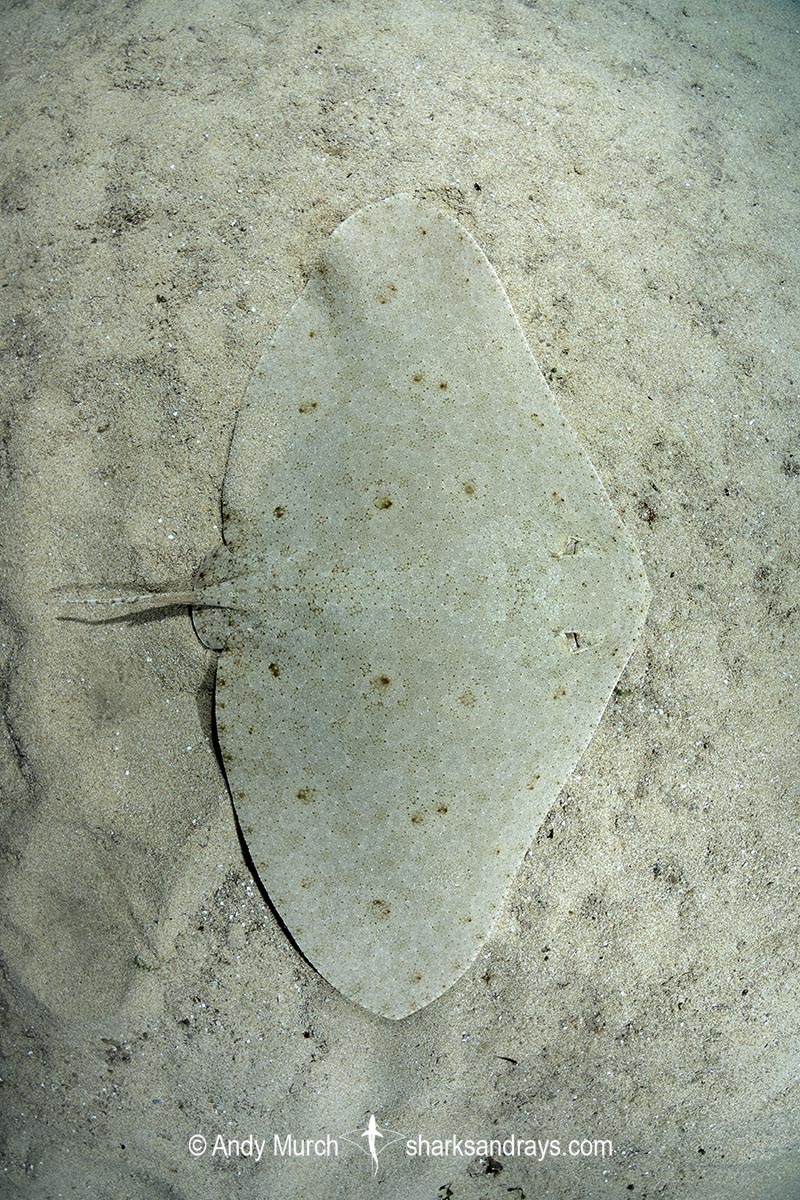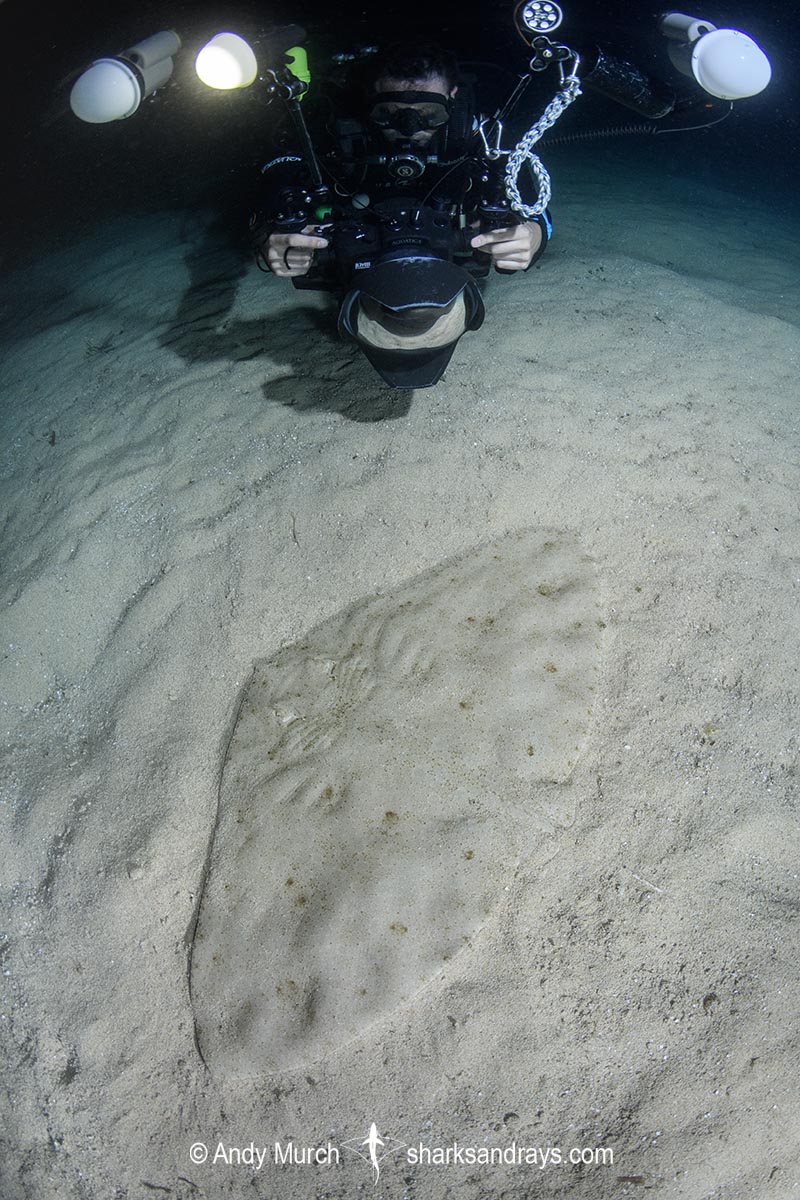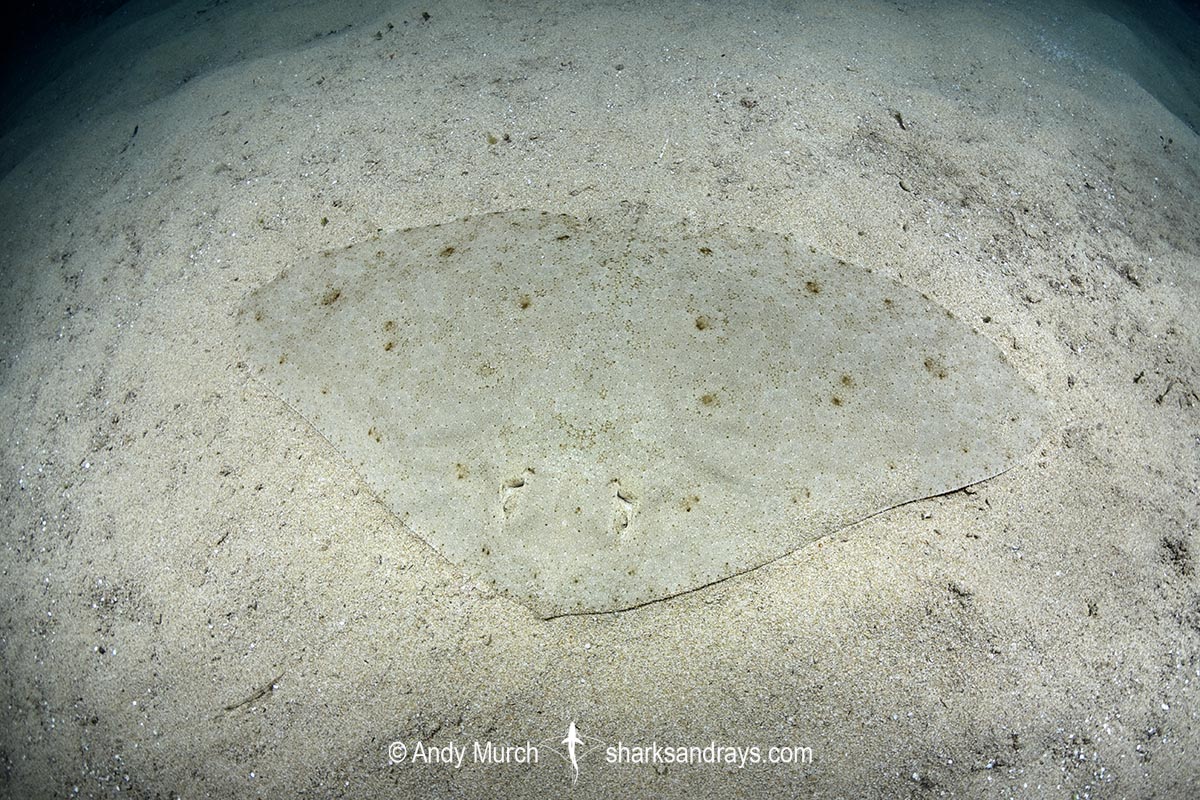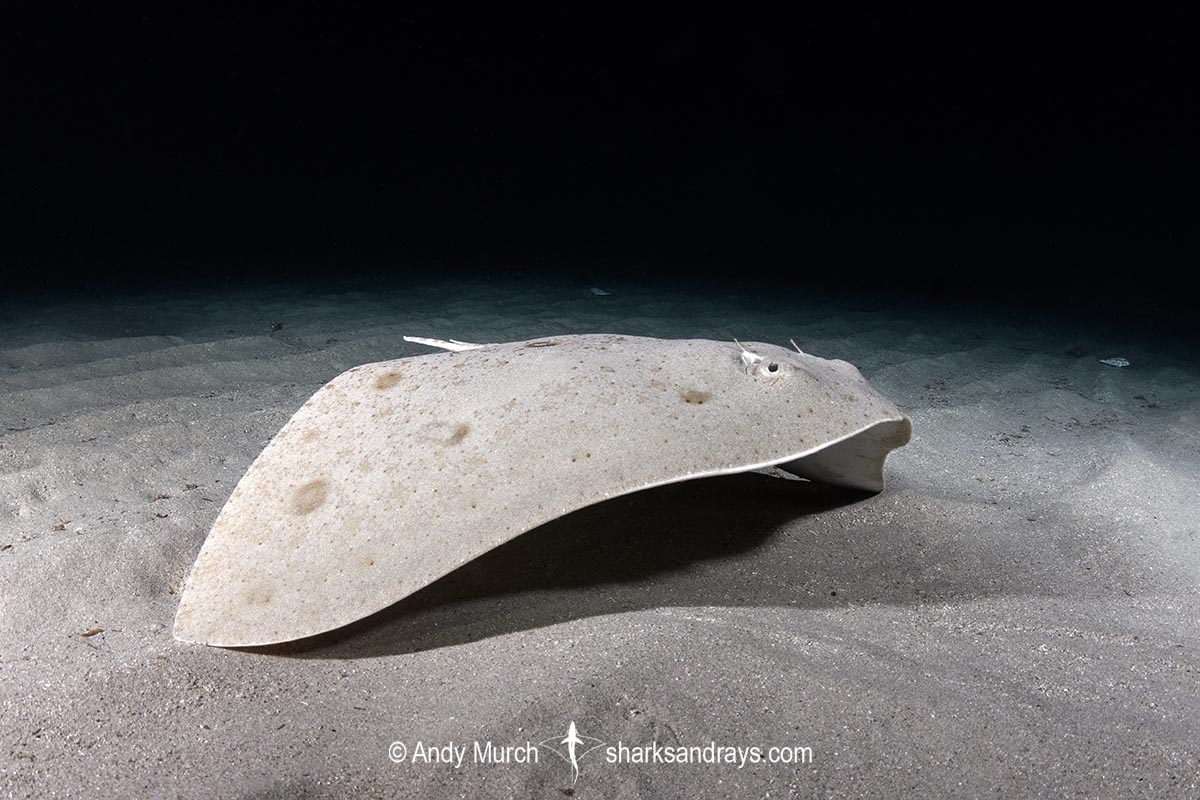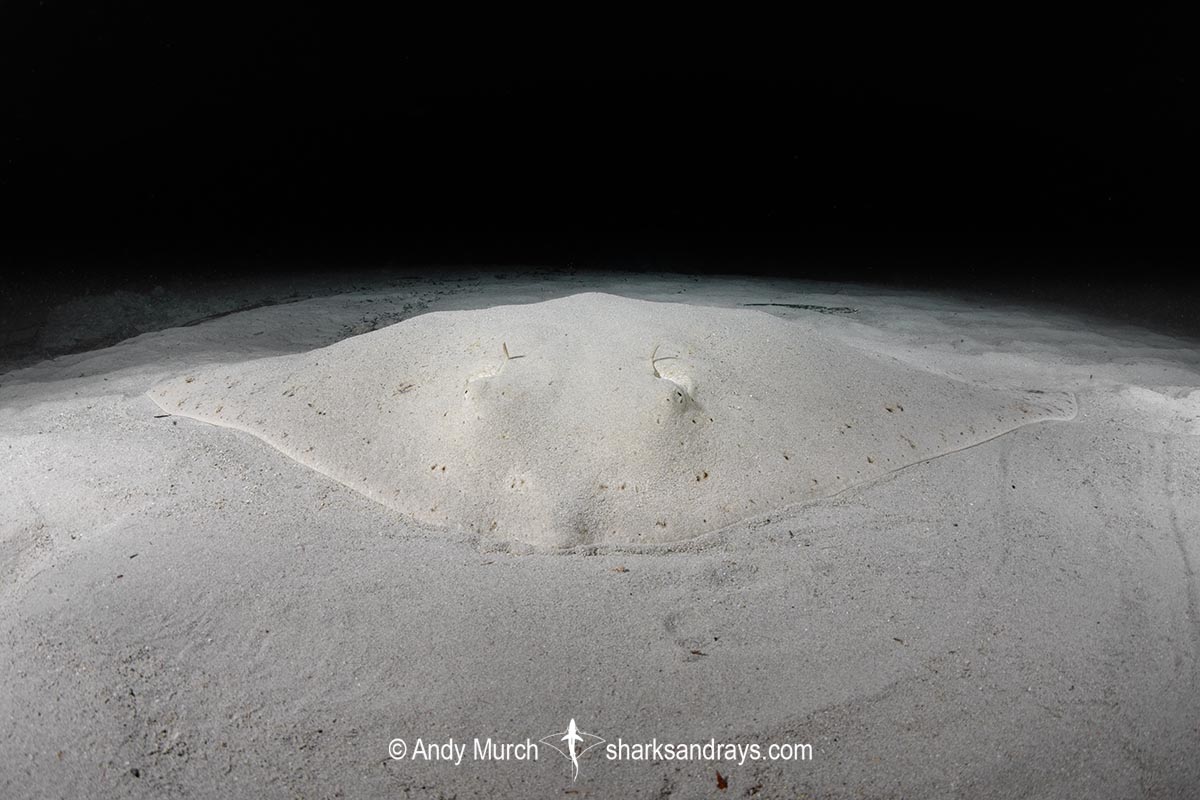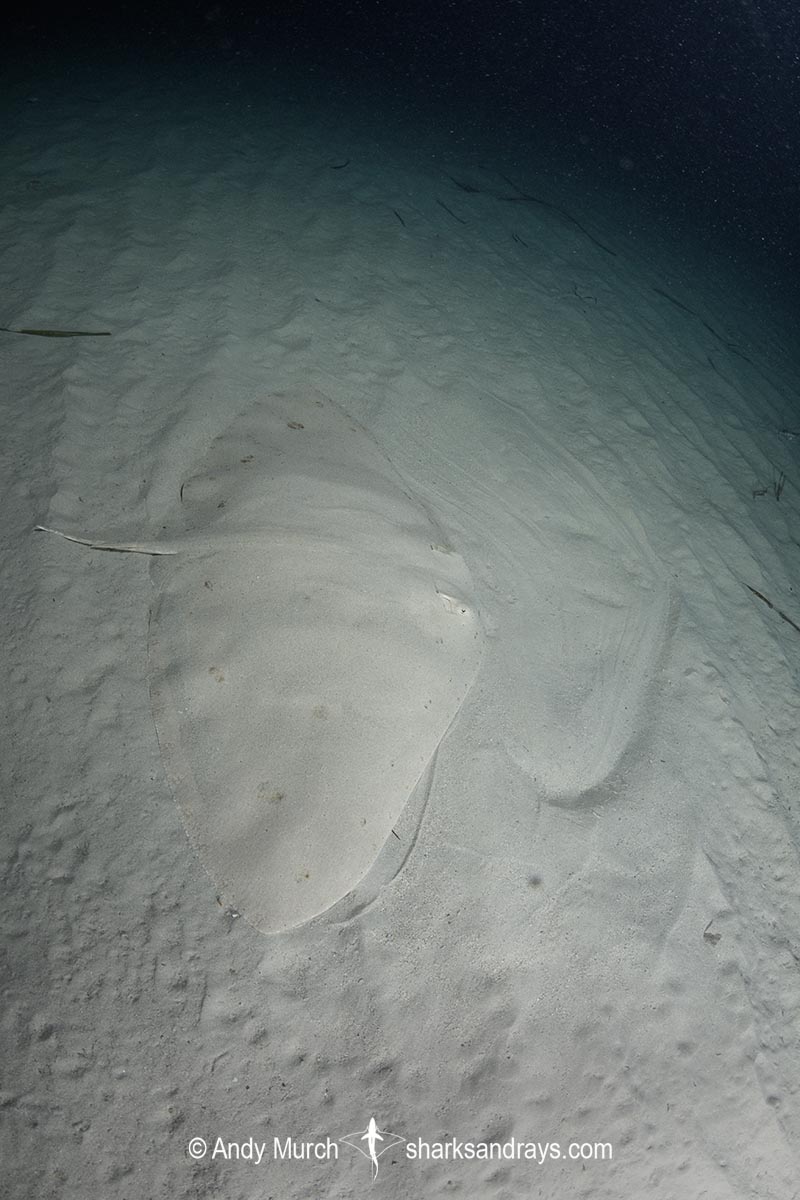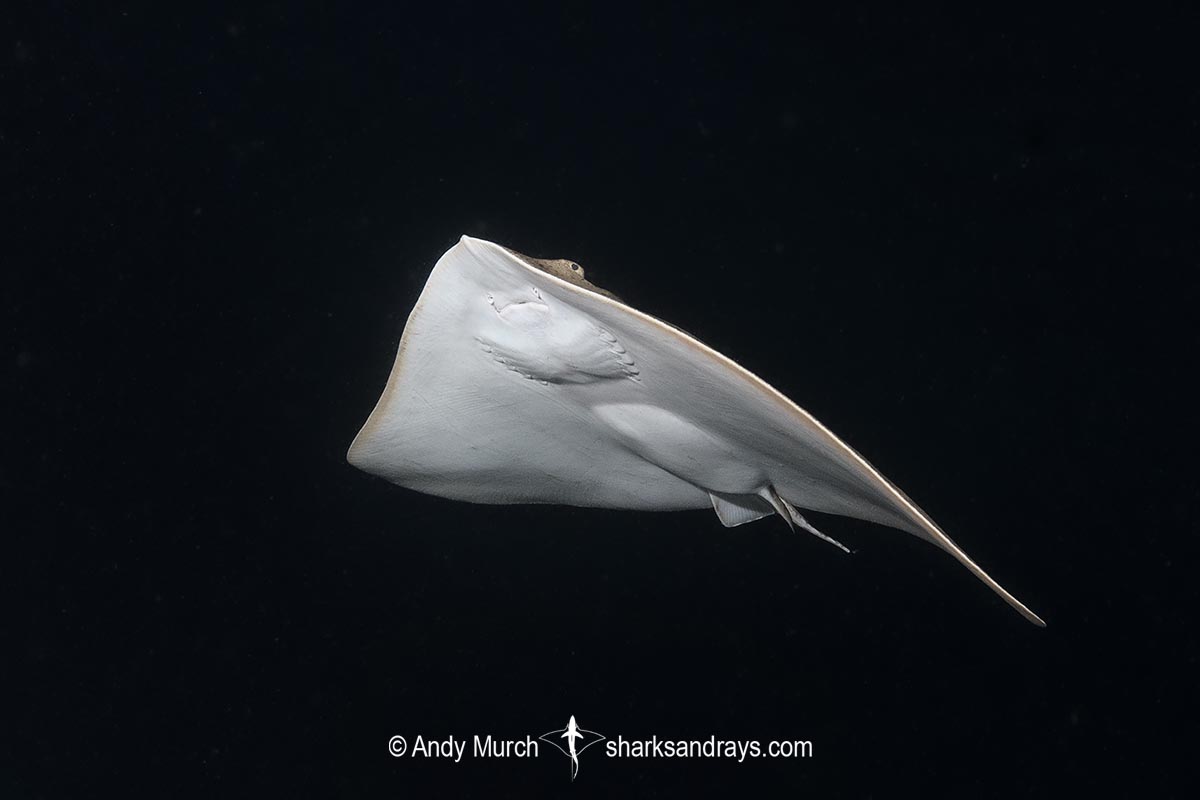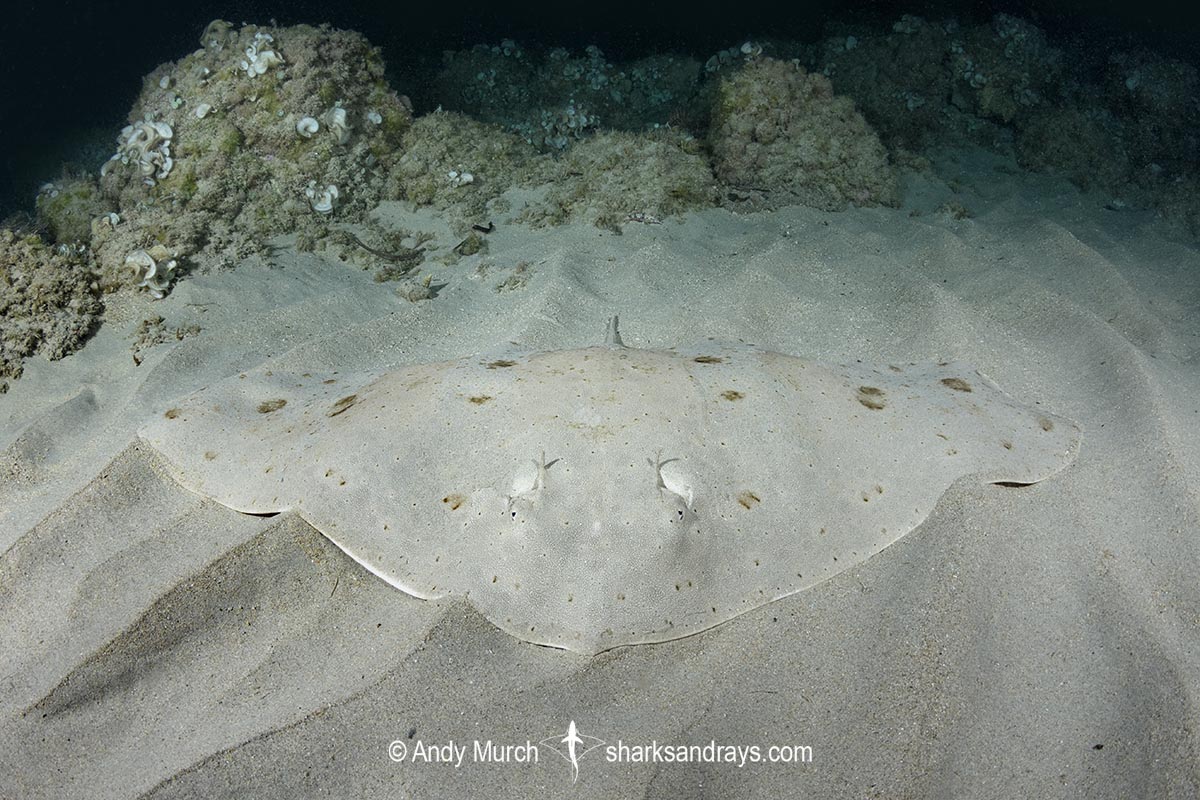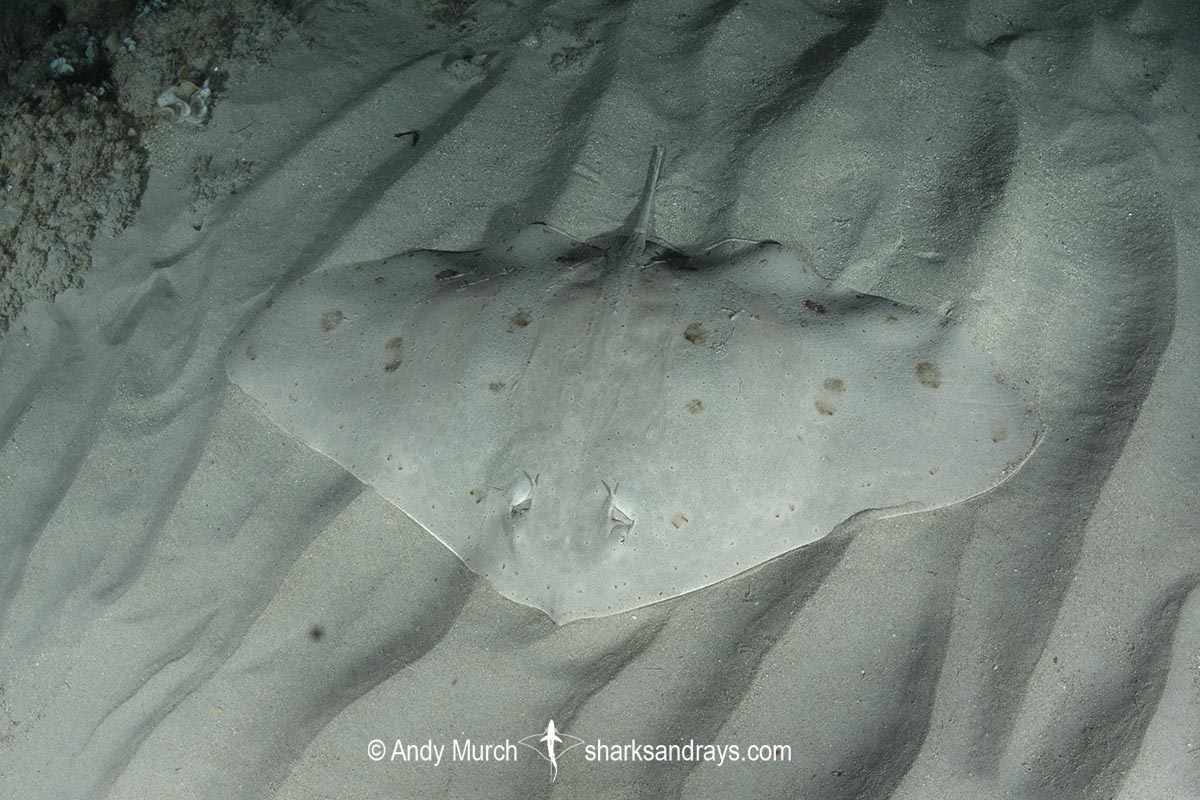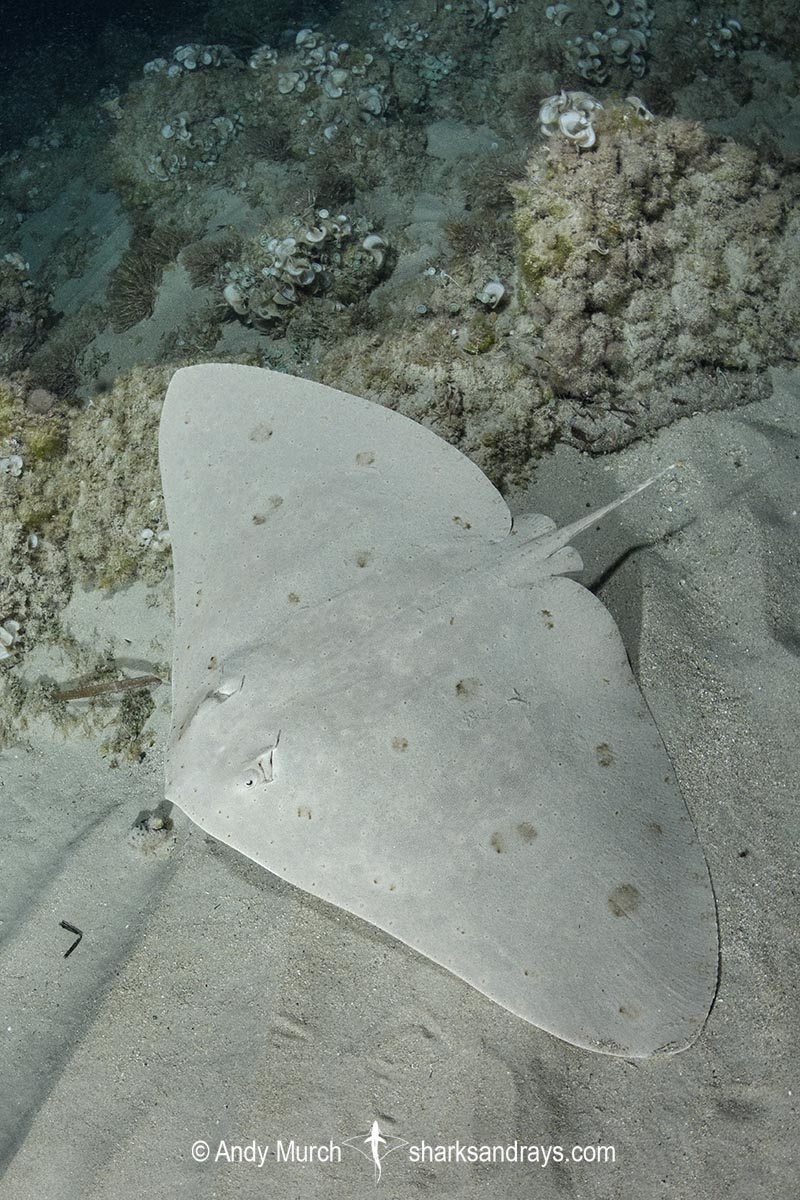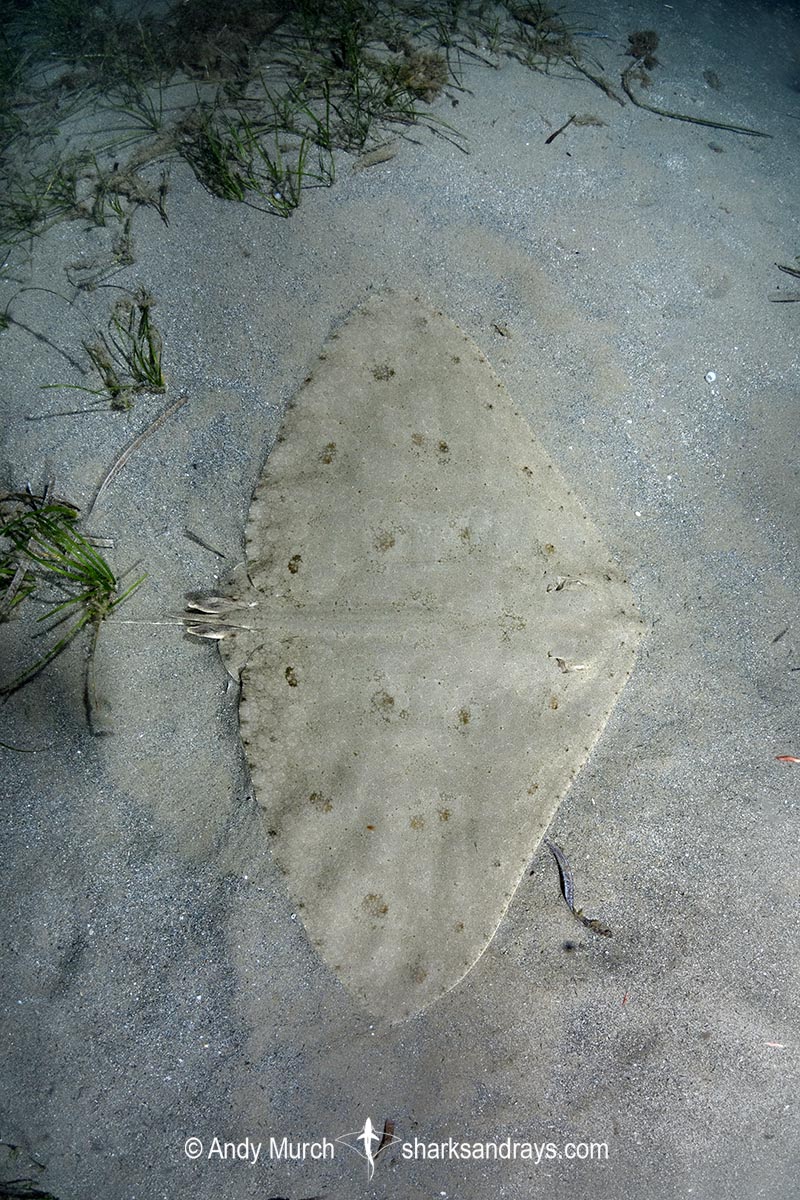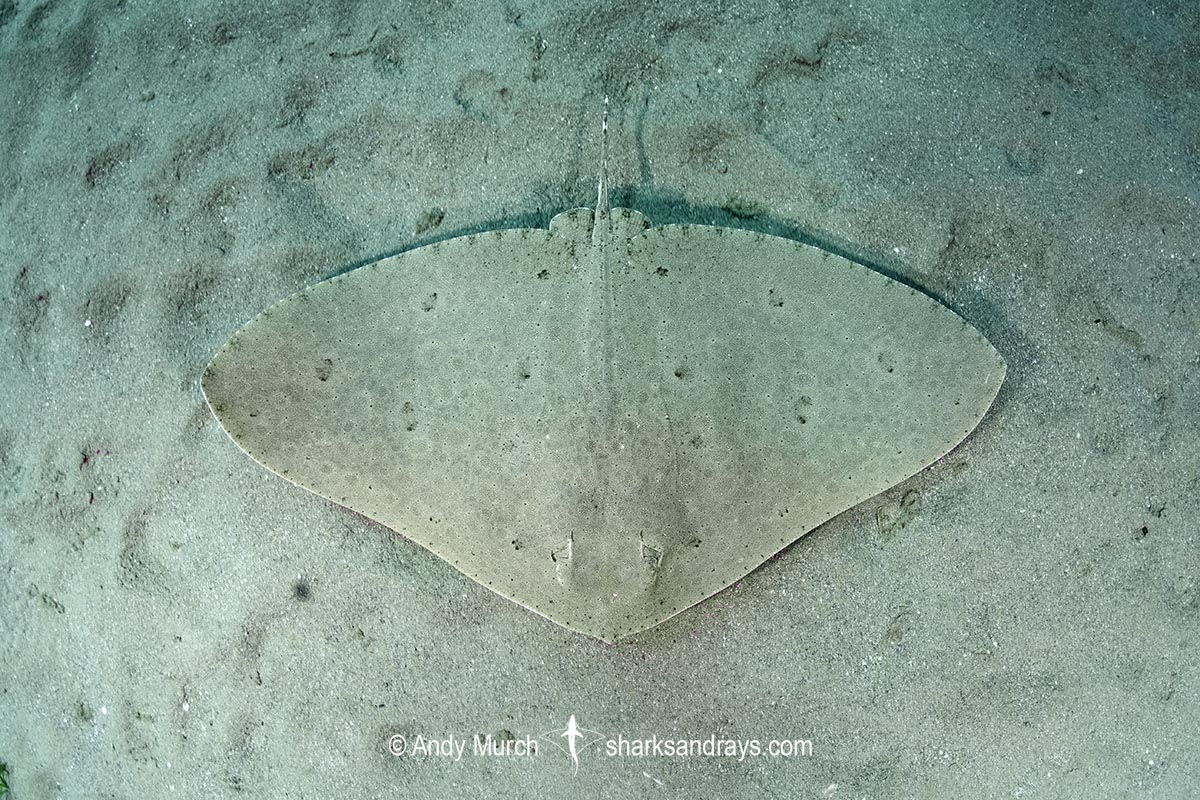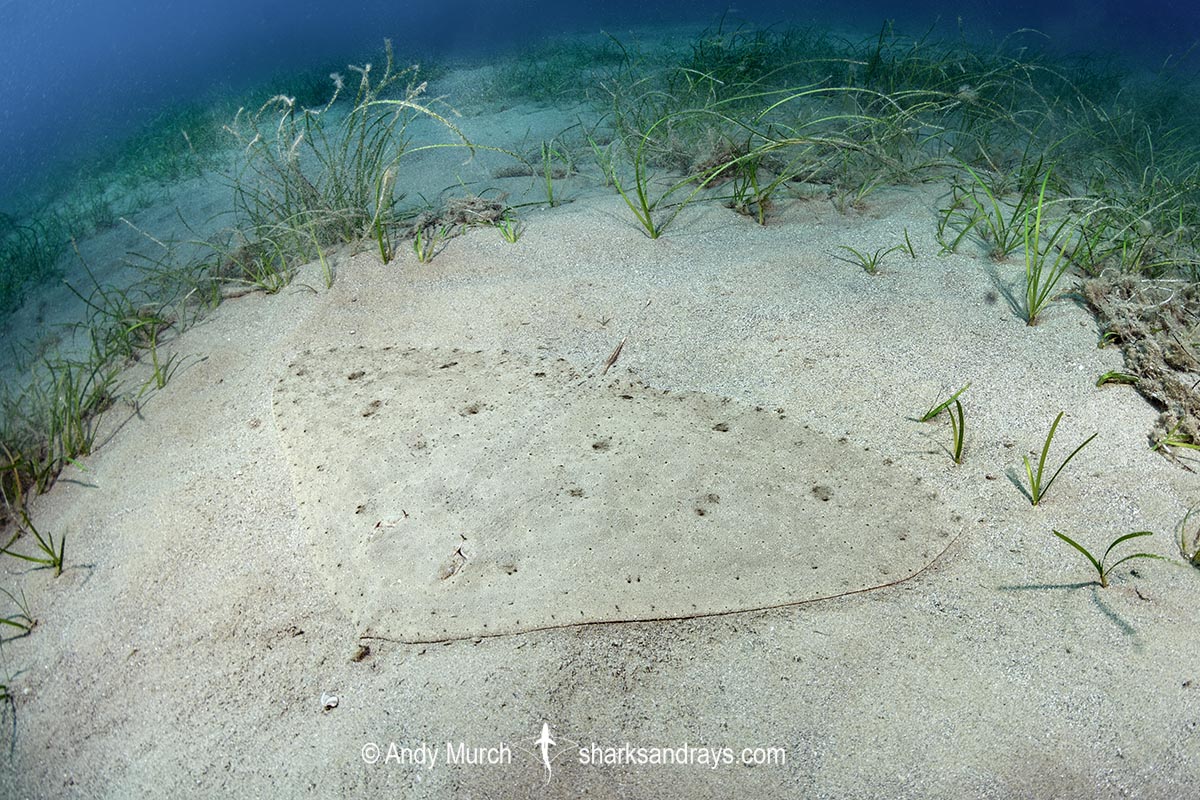Common name(s)
Spiny Butterfly Ray.
Binomial
Gymnura altavela
Synonyms
Dasyatis altavela, Dasyatis canariensis, Gymmnura altavela, Pteroplatea altavela, Pteroplatea binotata, Pteroplatea canariensis, Pteroplatea vaillantii, Pteroplatea valenciennii, Raja altavela, Raja maclura.
Identification
A very large butterfly ray with a wide kite-shaped disc. Disc width approximately 1.8-2.2 x length. Pectoral fin apices angular. Snout short; pre-oral length .08-.1 x disc width.
Eyes very small. Small, slender tentacle on posterior margin of each spiracle. Spiracle has a concave inner margin with a convex undulation anterior to tentacle. Mouth arched with a concave symphysis on lower jaw.
Skin generally smooth; sometimes with a few scattered denticles in larger adults. Tail short. Dorsal fin absent or tiny and vestigial. 1 or more strong caudal stings usually present.
Colour
Dorsum intricately patterned with very small dark spots, and larger light and dark blotches. Pattern contains shades of grey, tan, brown, and black and is essentially symmetrical and may appear as a series of broken rings and blotches, or vermiculate, or marbled. Rarely, with a white blotch close to on or both spiracles. Ventrum white or brownish. Tail usually with 3-5 subtle black bands.
Size
Maximum disc width 260cm. Disc width at birth 38-44cm.
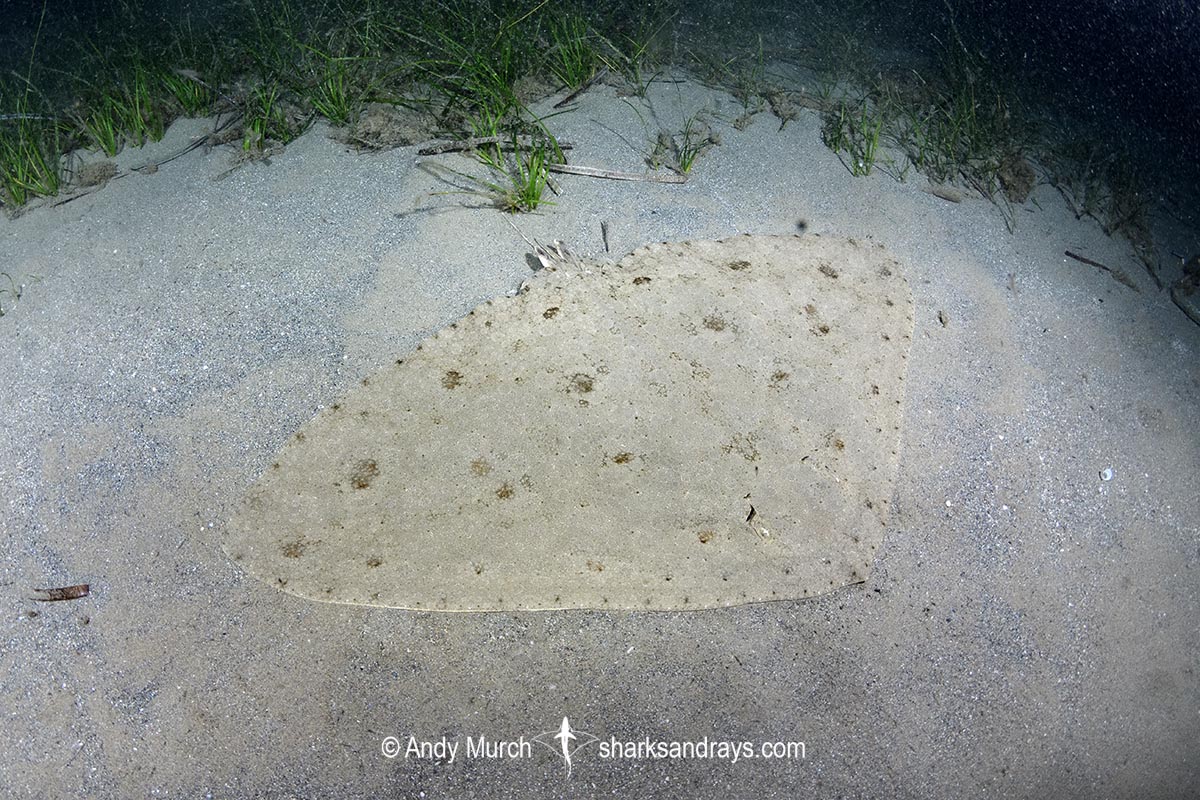
Conservation Status
ENDANGERED
The spiny butterfly ray’s small litter size, patchy distribution, and preference for shallow inshore habits where industrial and artisanal fisheries are widespread, have led to significant declines. It is caught in demersal trawl, shrimp trawl, bottom set gillnets, and beach seine nets.
In the eastern Atlantic, population reductions of 42.5% and 54% have occurred over a 33 year period in Morocco and Senegal, respectively. In the southwestern Atlantic, far greater declines have occurred; up to 98%. However, there is evidence that the western Atlantic population may be a separate species. If these species are split in the future, the eastern European species assessment would likely be lowered to “vulnerable. Whereas, the western Atlantic population assessment would be raise to ‘critically endangered’.
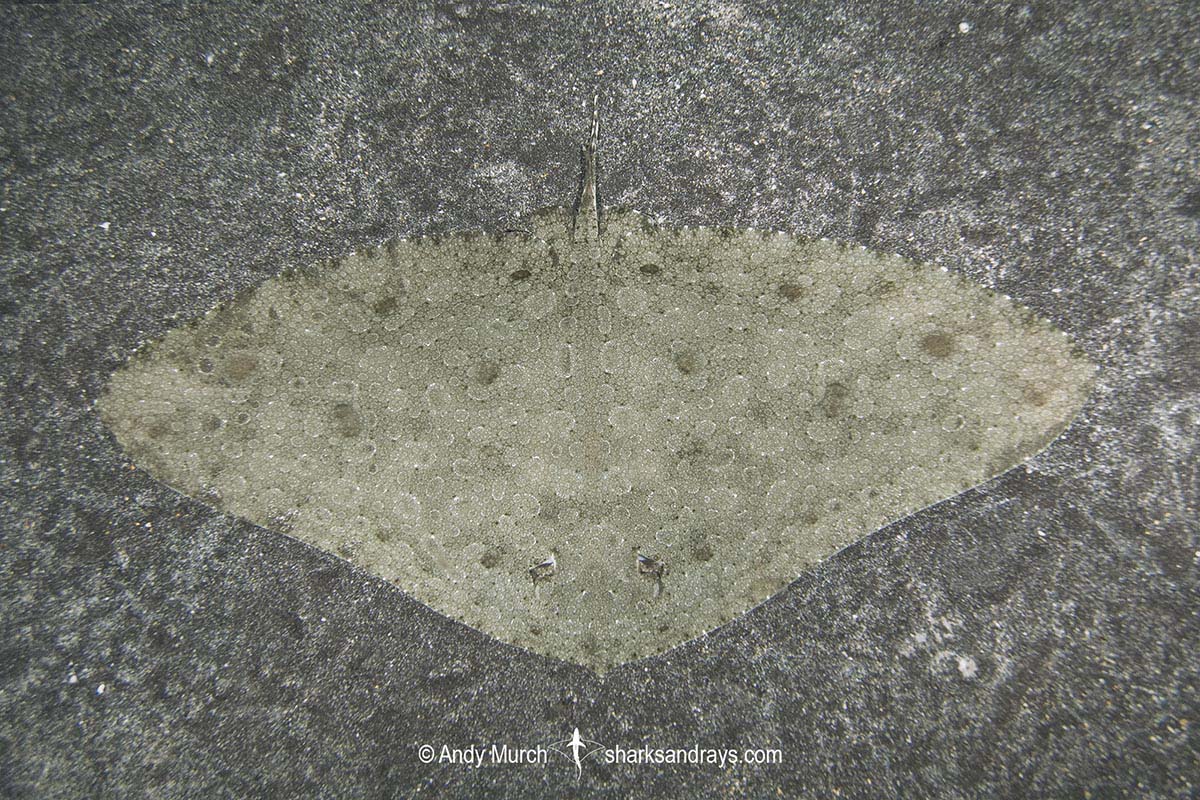
Habitat
Tropical to warm-temperate water. On sandy or muddy substrates, often in shallow bays but recorded to 150m.
Distribution
Eastern Atlantic from southern France to Angola, including the Canary Islands and Madeira, and throughout the Mediterranean Sea and Black Sea.
Currently listed as occurring in the western Atlantic from New England to Florida, southern Gulf of Mexico, and southern Brazil to northern Argentina. A 2022 study by Anderson Vilasboa et al, published in Cambridge University Press, reports two separate genetic lineages, indicating that there are likely two species.
Reproduction
Aplacental yolk sac viviparous. Litter size varies from 2 to 8. Gestation 4-9 months.
Diet
The spiny butterfly ray feeds on crustaceans, molluscs, and small fishes including other rays.
Behavior
Sedentary. Camouflages its body with sand by flapping its fins while resting on the bottom.
Reaction to divers
Fairly tolerant if not approached too closely. Will sometimes allow divers to slowly waft sand away from its disc but may bolt if it feels threatened.
Diving logistics
Widespread and quite common in the western Mediterranean. Cabo de Palos and Playa De Granadella are two of many beaches in Spain where this species can be seen.
Spiny butterfly rays are also fairly common around the Canary Islands.

